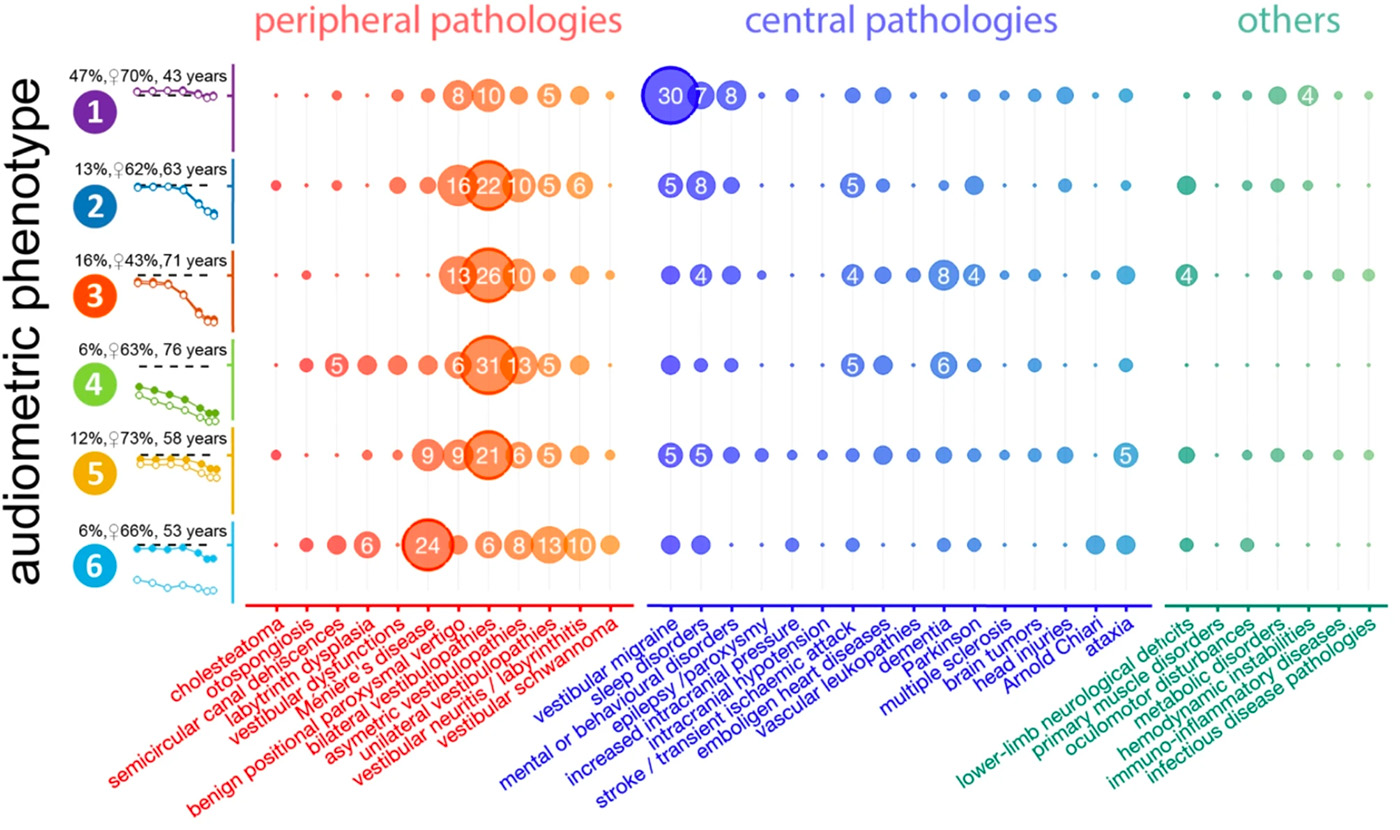The cochlea and the vestibule are two sensory organs associated within the inner ear. The first sounds the sounds while the second is responsible for balance. Both contain endolymph and perilymph and depend on common coding mechanisms, thanks to hair cells. Balance issues – which bring 20 to 30 % of adults to consult – find their origin in two main categories of causes. They can first come from central dysfunctions such as vestibular migraines, cerebral vascular accidents, Parkinson or others. They are also caused by a pathology of the inner ear or vestibular nerve, such as benign positional paroxysmal dizziness, Menière disease or vestibular neuritis. But the relationship between balance disorders and possible hearing loss remains little explored. This gap reflects a certain partitioning in the clinical approach to these issues. “” It must first be remembered that balance problems and hearing loss are not systematically associatedunderlines the Professor Jean-Luc Puel, Director of Research at the Montpellier Neuroscience Institute. In addition, vertigo specialists do not always have the reflex to make audiometry. »
Read also | ⶠVestibular otonurology, the poor parent of ENT
Links between hearing and balance
However, it would be relevant to do so. This is what the results of a team conducted by his team suggest [1] : Audiometric evaluations can provide predictive indications on vestibular dysfunctions and thus constitute precious diagnosis. This pleads in favor of a broader generalization of audiometric assessments in patients with instability or dizziness. To achieve this conclusion, scientists have analyzed the correlations between hearing loss and vestibular function in a large cohort of 1,115 patients (including 64.5 % women) consultant for instabilities or dizziness. In this cohort, almost half (49.3 %) of subjects had peripheral vestibular pathologies, 41.1 % of central pathologies and 10 % of metabolic or muscle problems. During an initial phase, data classification (“clustering”) made it possible to define six audiometric profiles. The first brought together norm-in-laws, the following two gathered people with more or less marked symmetrical losses on high frequencies (usually age linked) and the last three brought together patients or with asymmetrical losses affecting low frequencies or unilateral losses. The statistical analysis of audiograms made it possible to identify two variables (or components) which alone explain 95 % of the variability observed. “” The first component is the average hearing loss and it alone explains 92 % of this variability while the second, asymmetry of losses, is only responsible for 3 %details Jean-Luc Puel. This result is interesting because it underlines the relevance of using the average hearing loss to characterize an audiometric profile, as usually do hearing aids or ENT. »
Read also | ⶠAlmost half of deaf deaf children with vestibular disorders
Audiometry to refine diagnostics
Statistical analysis on audiometries has succeeded the collection of vestibular data. The tests rested on the observation of the nystagmus, a reflex movement of the eyes used to stabilize the gaze during the movements of the head. The calorie test which consists in alternately stimulating the right and left side semi-circular channels with hot or cold water to identify unilateral vestibular losses. The rotary tests, which request both ears during movements of the chair, make it possible to detect bilateral vestibular losses. The video head impulse test (VHIT) analyzes the function of each semi-circular channel individually by subjecting the head to sudden movements in different directions. Then the study authors set out to seek correlations between vestibular and audiometric data. “” If audiometry is a robust measure, the results of the vestibular tests have more inter- and intra-individual variations. It is for this reason that we have decided to filter this vestibular data according to audiometric profiles, in order to classify vestibular pathologies according to hearing profiles “Explains Jean-Luc Puel.
The analysis of the etiologies of balance disorders as a function of the audiometric profile provides interesting information. First of all, half of the people who consult for dizziness have normal hearing. In this group, 30 % of subjects suffer from vestibular migraines (central dysfunction) while bilateral vestibulopathies and benin paroxysmal positional dizziness (peripheral origin) only concern 10 % and 8 % of this population respectively. “” These results suggest that, in norm-in-laws, dizziness find their origin more frequently in central mechanisms than in the inner ear issuesperformer Jean-Luc Puel. It is all the more important that central pathologies can be very serious. »
Another interesting information: bilateral vestibulopathies are correlated with age -related hearing losses, ” Which means that presbyacousis is a predictive factor of presbyvestibulia “Comments Jean-Luc Puel. In addition, there is a higher prevalence of unilateral vestibular pathologies in patients with unilateral or asymmetrical hearing losses, which suggests common sovereign peripheral mechanisms, for example Menière’s disease. “” It affects 24 % of the group’s subjects in which hearing losses are the most asymmetrical while this condition affects only 4 % of the population of patients who consult for dizziness », Underlines Jean-Luc Puel still.
Big data and multidisciplinarity
Finally, this study, ” Who could never have been born without the complementary expertise of an ENT doctor, Cécile Nicolas-Puel, and engineers specializing in data processing, Jean-Charles Ceccato and Jérôme Bourien “, As Jean-Luc Puel points out, pleads for Big Data and the multidisciplinary approach: the analysis of massive data not only integrating audiometric and vestibular measures, but also metabolic and biological constants, medical imaging results and health history, will allow, in the relatively close future, to better understand the mechanisms of the disease and its evolution. “” There is no doubt that this approach associated with artificial intelligence will open up therapeutic and/or functional rehabilitation adapted and effective perspectives “, Already anticipates the researcher.


